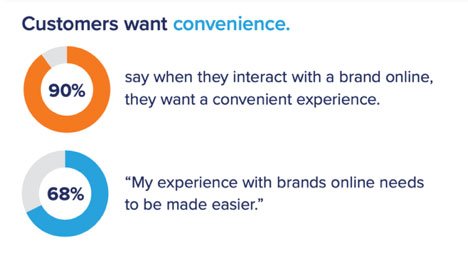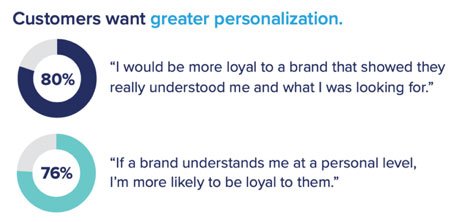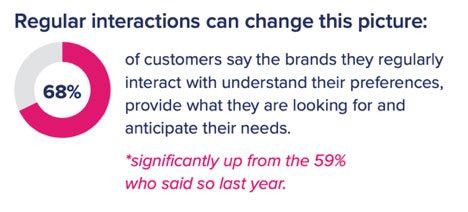The Best Senior Living Websites Give Prospects What They Want
Let’s discuss strategies for creating the best senior living websites, shall we?
According to a study by Acquia, 90% of prospects report that the brands they are researching fail to meet their expectations of a good customer experience. What are they looking for? These three things: convenience, greater personalization, and regular interactions.
What’s even worse is this: 63% of consumers report that they will abandon a brand if the online experience is poor.
So how can senior living brands meet prospects’ expectations as people search online? Below we review each area—convenience, greater personalization, and regulation interactions—and provide hints and pro tips for improving each one on your senior living website.
1. Convenience.
Convenience means that when a prospect lands on your website, they understand what you do and who you serve. Plus, they have choices in how to explore your site to find the information that they’re looking for. On average, prospects take 8 seconds to decide if your website is worthy of their time—or if they should move on.
The best thing you can do is make sure your website navigation is clear and intuitive—and that it meets the many different needs that prospects have.
Hint: The top navigation should include the following:
- Locations. And if there are multiple states, communities should be organized by state first and then city/ town.
- Lifestyles. Include hover-overs/drop downs to represent the care levels you offer (e.g., independent living, assisted living, etc.).
- Resources. Offer un-gated content (like your blog) and premium content that requires a form in order to get the goods (like guides, infographics, and tips).
Your site should also have plenty of calls-to-action (CTAs). On the home page especially, you should have two to three CTAs for prospects to choose how they can engage with you, such as Download Our Brochure (a pdf from the website), Schedule a Tour, and Click to Call (with tracking number).
- Pro Tip: Grab a timer, pull up your website and your competitors’ sites, and set the timer for 8 seconds. In that time, is it easy to tell what you do and who you serve? Is it easy for people to find their way around? How does the experience on your website compare to that of your competitors?
2. Personalization.
Prospects are looking for a personalized experience. The brands that strive to understand each prospect as an individual—and then customize the journey to the individual—will win. Keep in mind that 87% of all prospects will visit your website before they ever pick up the phone, so the personalization must start at your website.
Hint: Use marketing automation technology, such as HubSpot, to track prospect behavior on your website (e.g., number of visits, pages viewed, content downloaded, and email opens/ clicks) so you can enroll them in custom workflows based on their interests.
Strategically insert persona, stage, and motivation questions on all forms/landing pages. For example, if a prospect wants to download a brochure, ask them who they are inquiring for (self, parent, spouse, etc.) and what is most important to them in finding the right community (e.g., lifestyle/amenities; affordability/cost; socialization; access to healthcare). Then, create separate journeys for each.
- Pro Tip: A high-performing website gathers information about persona/role (the adult daughter responds to different messaging than the adult son); understands the stage for each prospect (awareness, consideration, or decision); offers resources for each stage to keep prospects engaged throughout their journey; and uses this information to provide the right content/information to the right prospect at the right time.
3. Regular Interactions.
The majority (90%) of senior living website visitors are in the awareness stage, so it is important to create ways to keep them engaged and advance them along their journey.
At the beginning of their research, they will be interested in the basics: cost, services and amenities, activities, etc. Interactive surveys and blog posts/guides discussing financial scenarios, senior living overview, and family decisions work well in this stage.
In the consideration stage, prospects begin to explore floor plans, virtual tours, and reviews, so blogs and guides related to finding the right community, home vs. community pros & cons, and downsizing tips are valuable at this stage.
In the decision stage, most prospects are in direct communication with the sales team, but the website can support this stage with helpful items like packing lists and transitional topics.
Hint: Call Senior Living SMART for a website audit to find your best opportunities to improve website traffic and lead conversion.
- Pro Tip: Create a content calendar with topics and keywords related to each prospect stage. Hire a professional copywriter! (And remember: you get what you pay for in that department.) Link all blogs to a piece of premium content, such as a guide, tip sheet, or infographic—gate it (put the item behind a form) so you can turn anonymous blog readers into contacts that you nurture.













Leave a Reply
Want to join the discussion?Feel free to contribute!